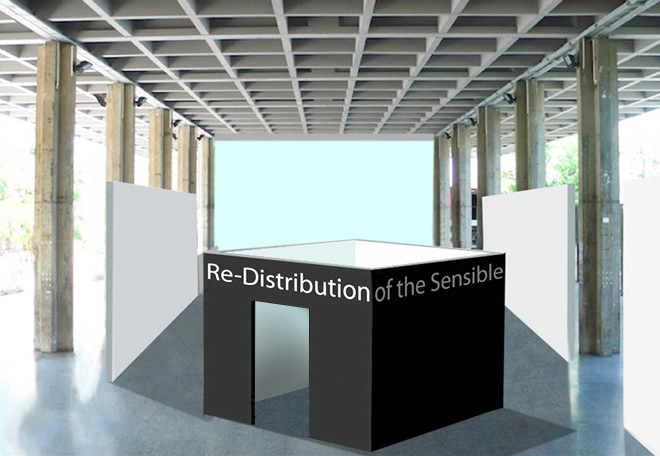|
Note: This installation is commissioned for the 12th Havana Biennial in Cuba. I am interested in Rancière’s definition of the “distribution of the sensible” in terms of inclusion and exclusion and the way they contribute to the production of visibility. Ranciere’s work lays out possibilities for the “re-distribution of the sensible” through the analysis of the relationship between aesthetics and politics. As stated in the mission statement of the 12th Havana Biennial, the projects in the exhibition “must bear an effect upon [the city's] inhabitants.” Combining the Biennial’s focus on process and my aim to democratize participation, this project functions as an exhibition within an exhibition. It is simply the creation of a platform to host a series of events over the duration of the Biennial. This experiment temporarily redefines the line between inclusion and exclusion, and alters the edges of visibility by expanding what is possible within a given context. For one week each, this 100 sq feet space hosted the work of 3 Havana-based artists not officially invited to be part of the Biennial. Also on a weekly schedule, I commissioned local house painters to paint one wall of the gallery a different color. The first house painter was present and at work during the opening of the exhibition. On the last week of the exhibition, the gallery was used as a reading room containing 20 copies of the Spanish translation of JACQUES RANCIÈRE: ESTÉTICA Y POLÍTICA. I purchased these books and they were available for visitors to take.
|
"The distribution of the sensible… refers to the implicit law governing the sensible order that parcels out places and forms of participation in a common world by first establishing the modes of perception within which these are inscribed. The distribution of the sensible thus produces a system of selfevident facts of perception based on the set horizons and modalities of what is visible and audible as well as what can be said, thought, made or done. Strictly speaking, distribution therefore refers both to forms of inclusion and to forms of exclusion.” -Jacques Rancière, The Politics of Aesthetics
|
|||||||||||||||||||||||||
